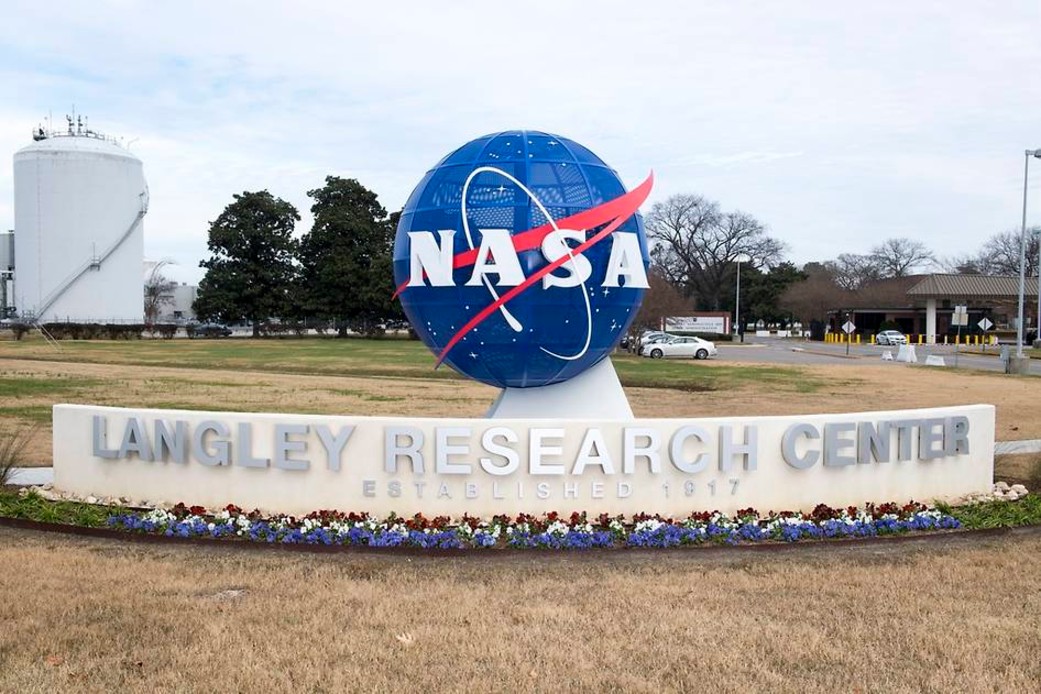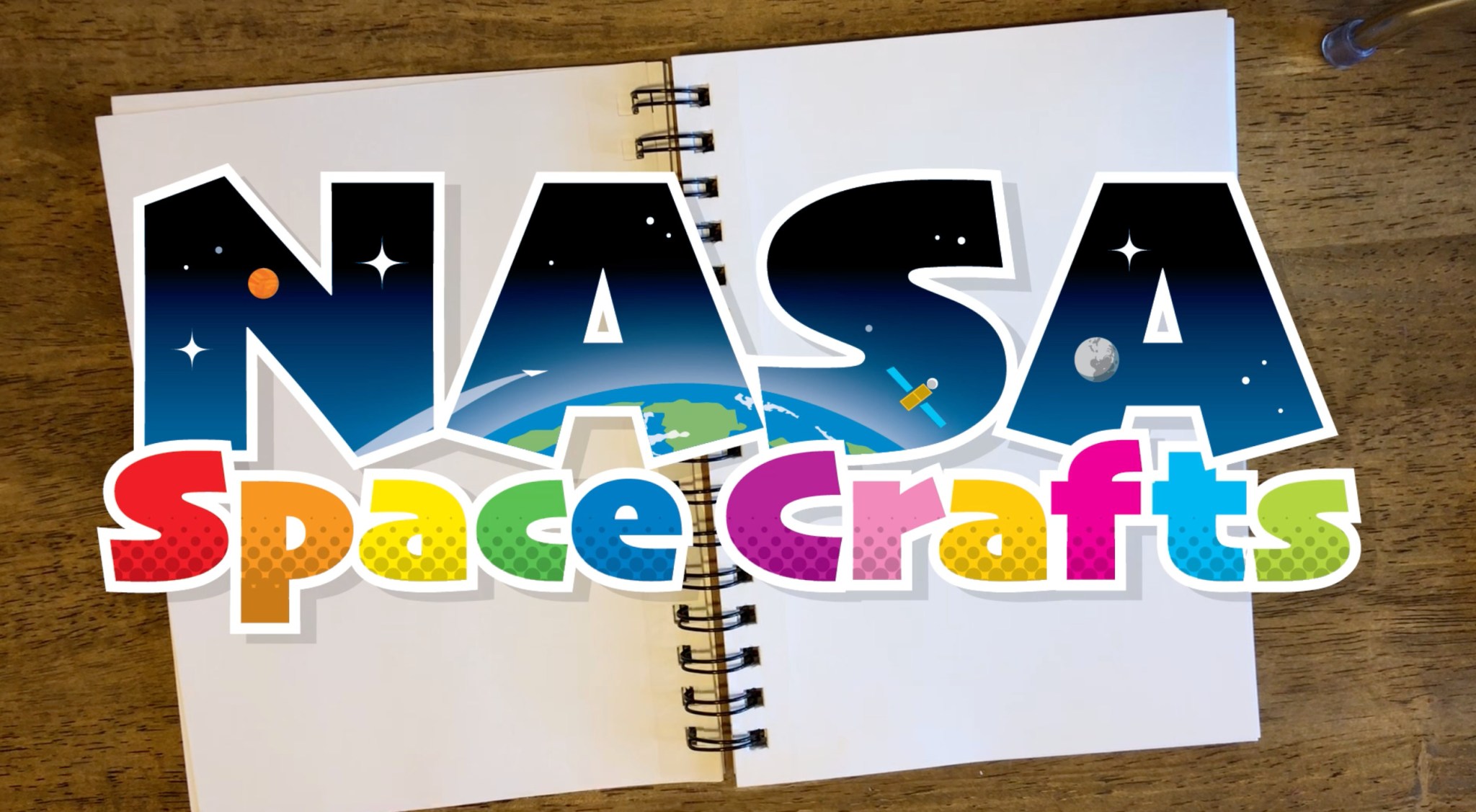The New Year dawned on Jan. 1, 2020 with the hope and excitement that any new year brings. While the headlines told of a virus ravaging parts of China, most Americans were unaware of what would soon be coming to our shores. But by March, it was clear the world was facing a pandemic. 2020 was a year that tested citizens of the world as nations instituted various measures to stop the spread of COVID-19. Most of NASA transitioned to telework, including NASA’s Langley Research Center in Hampton, Virginia. However, the team rose to the challenge and found great success for the American people in a largely virtual world.
Aeronautics – Advancing Technologies for the Future of Flight
For the aeronautics research team, the year began by shaking things up with the vibration testing of the eXternal Vision System (XVS) of the NASA’s X-59 Quiet SuperSonic Technology, or QueSST, aircraft. The XVS pallet was tested for structural integrity during flight scenarios ensuring the future safety of the aircraft and pilot.
The world of unmanned flight, on the other hand, intentionally crashed an aircraft. NASA’s SAFEGUARD software, a geo-fencing technology that creates no-fly zones for autonomous vehicles, was put to the ultimate test to bring down a violating vehicle.
NASA Langley’s own unmanned vehicle, a technology test-bed called the Aerodrome 8 or LA-8 for short, took to the skies for the first time in a tethered flight. Originally the LA-8 was scheduled to continue testing with tethered-free flight, but COVID-19 delayed these tests until 2021.
Multiple NASA research centers partnered with Boeing for the 2020 ecoDemonstration. As part of the collective research, scientists from NASA Langley outfitted a 787-10 Dreamliner with more than 200 microphones to study how the aircraft’s total sound is affected by the placement of the engines.
NASA’s Unmanned Aircraft Systems Integration in the National Airspace System (UAS in the NAS) project began in 2011 and concluded in September 2020. This year the Systems Integration and Operationalization demonstration activity completed two demonstrations under the UAS NAS project and the third will happen under leadership of the Advanced Air Mobility project in early 2021.
Towards the end of the year as COVID-19 numbers declined and safety measures were in place, on-site testing received the green light to proceed. The first into the action was NASA’s X-57 all-electronic aircraft’s propeller system. The X-57’s innovative propeller technology is designed to increase thrust and lift, during take-off as an example, then collapse back when no longer needed.
NASA Langley’s Aeronautic Research Department celebrated the end of the year with an anniversary event. NASA Langley’s 14-by-22 Subsonic Wind Tunnel celebrated its 50th year of operations. The tunnel has seen tests from early military helicopter designs to NASA’s new Space Launch System.
Earth Science – Understanding Our Home Planet
Early in the year, Langley atmospheric scientists conducted the first flight campaign of the Aerosol Cloud meTeorology Interactions oVer the western ATlantic Experiment (ACTIVATE), which is studying the complicated interactions between aerosols, clouds and meteorology over the Atlantic Ocean. COVID-19 ended that campaign early and threatened to keep a planned second set of flights from happening, but with strict safety protocols in place, the team was able to fly again in August and September.
Though it’s not scheduled to launch until 2022, it was a significant year for Tropospheric Emissions: Monitoring of Pollution (TEMPO), a satellite instrument that will observe air quality over North America. TEMPO found both a satellite host, Intelsat 40e, and a ride to space, a SpaceX Falcon 9 rocket. TEMPO will be part of a constellation of satellites looking at air quality around the Northern Hemisphere. South Korea’s Geostationary Environment Monitoring Spectrometer (GEMS), the first satellite in that constellation, launched in early 2020.
Both the Cloud-Aerosol Lidar and Infrared Pathfinder Satellite Observations (CALIPSO) satellite and the Stratospheric Aerosol and Gas Experiment III (SAGE III) on the International Space Station observed wildfire smoke in the atmosphere. CALIPSO saw smoke from the Australian bushfires as it spread across the Pacific Ocean. CALIPSO also observed the massive Saharan dust plume that affected U.S. air quality from Florida all the way to Kansas. SAGE III detected smoke from the wildfires in both Australia and California all the way up into the stratosphere. There, that smoke can linger for months or even years and contribute to variability in the climate record.
SAGE IV, a prototype ozone monitoring instrument, would make measurements similar to those of SAGE III. Unlike its washing-machine-sized predecessor, though, SAGE IV would fit neatly within the confines of a CubeSat that’s not much bigger than a shoebox. In 2020, Langley scientists took SAGE IV onto the roof of one of the center’s buildings to conduct Sun-look tests. These tests are critical for an instrument that makes measurements of ozone and aerosols by looking at the light from the rising or setting Sun as it passes through Earth’s atmosphere.
On the 50th anniversary of Earth Day, Langley Earth scientists were among those who imagined what the next 50 years might look in their fields of study. Also highlighted as part of that 50th anniversary was the work of Langley researcher Brian Killough, who led the technical development of the African Regional Data Cube, a tool that is allowing a conservancy in Kenya to protect and preserve grazing land for rhinos.
Severe storm researcher Kris Bedka was part of a team that provided satellite and radar analysis of the monster derecho that ripped across Iowa in August. That analysis was helpful to state officials as they assessed the scale and scope of the disaster. Bedka is also principal investigator for a project that’s using satellite data to detect hailstorms, hail damage and improve scientists’ understanding of hail frequency. That project stands to provide numerous stakeholders — from the reinsurance industry to forecasters — with useful information on when and where hailstorms are likely to occur.
Space Technology and Exploration – The Solar System and Beyond
Navigation Doppler Lidar (NDL), a precision landing technology being developed at NASA’s Langley Research Center in Hampton, Virginia, was tested on the runway at Langley Air Force Base early in 2020. Even during the challenge of working through a pandemic, the team at Langley built, tested and delivered two instruments to commercial partners. One was sent to Blue Origin in Kent, Washington for a flight test on their New Shepard launch vehicle and one was sent to Intuitive Machines for integration on their robotic lunar lander as part of the Commercial Lunar Payload Services initiative.
In February, NASA successfully tested the attitude control motor (ACM), which is built by Northrop Grumman and provides steering for Orion’s Launch Abort System during an abort, at the company’s facility in Elkton, Maryland. The 30-second hot fire was the third and final test to qualify the motor for human missions, beginning with Artemis II.
Researchers and technicians at Langley began work on the intricately machined and welded backplate of the new Portable Life Support System (PLSS) for the Exploration Extravehicular Mobility Unit (xEMU) spacesuit, led by NASA’s Johnson Space Center using electron beam welding equipment and innovative techniques.
Langley researchers, with colleagues at the NASA Space Radiation Laboratory at Brookhaven National Laboratory in Upton, New York, created a space radiation simulator based on new technology and an innovative design for creating a broad spectrum of galactic cosmic rays (GCRs). The new simulator will help speed up understanding of radiation risks astronauts face, and develop techniques to reduce those risks, as they head to the Moon under the Artemis Program and prepare for future missions to Mars.
Langley also had its fingerprints on the Mars 2020 Perseverance rover when it launched in July. Langley provided significant contributions in the entry, descent, and landing area including modeling and simulations, parachute testing, MEDLI2, and development of the Mars helicopter, Ingenuity. Langley will also play a large role in the next Mars mission, building the earth return capsule for the Mars Sample Return as well.
The Orion spacecraft Structural Test Article (STA) was delivered to Langley Research in preparation for a series of water impact tests at the center’s Landing and Impact Research Facility, or gantry. The tests, scheduled for early 2021, will look similar to previous tests. This time, however, the crew module is more flight-like in its configuration and will help finalize model correlations prior to Artemis II.
Finally, the Scientifically Calibrated In-Flight Imagery (SCIFLI) Hayabusa 2 Airborne Reentry Observation Campaign (SHARC) team successfully imaged the reentry of the Japan Aerospace Exploration Agency (JAXA) mission Hayabusa 2.
Educating Our Future through STEM Engagement
Great things happen where inspiration and education meet. Men and women of Langley eagerly share their passion for science, technology, engineering, and math — known collectively as STEM, and the challenges of 2020 couldn’t stop that.
When the COVID-19 pandemic struck in March, it required Langley officials to rethink and retool engagement efforts, as it forced creativity and adaptability in the virtual space..
In 2020, Langley’s STEM engagement office shifted gears to go online to produce content for the agency’s NASA at Home initiative for families. That effort yielded activities and coloring pages on subjects including the Artemis and Mars Perseverance missions and NASA legend Katherine Johnson, who passed away in 2020.
Langley also produced four videos for Virginia Public Media — the PBS TV and NPR radio Virginia affiliate in Richmond, Central Virginia and the Shenandoah Valley — to support students without adequate internet access.
Staffers pivoted to virtual education efforts and re-imagined events for an online audience. The center’s annual Youth Day for children of center employees took place as a virtual event. The center hosted a geographic information system (GIS) webinar for college students and hosted over 300 interns during the summer and fall.
NASA’s Minority University Research and Education Project (MUREP) engaged underrepresented populations through a wide variety of initiatives, partnering with offices across the center and beyond. Before the pandemic, the center hosted students from community colleges and kicked off a new effort with the agency’s Aeronautics Research Mission Directorate (ARMD) to engage faculty and students at minority serving institutions in high volume manufacturing.
In July, Langley and NASA’s Wallops Flight Facility joined with Virginia Commonwealth University to present a three-day professional development class for teachers in the Richmond area. That same month, a workshop for math teachers offered with Radford University, began virtually, giving Virginia teachers access to NASA experts and materials supporting math lessons.
Langley helps the agency inspire youth through NASA STEM Stars, a series of webinars connecting K-12 educators and families with NASA experts. Langley employees also volunteered their time and knowledge through the Langley CARES, or Community Alliance to Reinforce Education in STEM, program, which aims to empower the next generation of the NASA workforce in the Hampton Roads community.
Add an “A” for “arts” to STEM, you get STEAM. The annual student art contest, administered by Langley, attracted a record 1,277 submissions from 40 states and Puerto Rico. 2020’s theme, “We Are Going,” highlighted NASA’s plans to return to the Moon and fly to Mars in the coming years. New Jersey high schooler Camila Garcia took the grand prize. “My inspiration for my artwork was simply the idea of things being reachable,” she said, epitomizing the goal of Langley’s STEM engagement professionals.
Reaching New Heights in 2021
While much of NASA Langley began 2021 the same way it ended 2020 – working virtually – the team benefitted from embracing new technologies and learning to stay connected in a remote world in 2020. The New Year is only a few weeks old, but researchers, scientists and engineers at Langley are building upon the successes of 2020 to reach new heights to discover the unknown for the benefit of all humankind in 2021. Stay tuned!





























